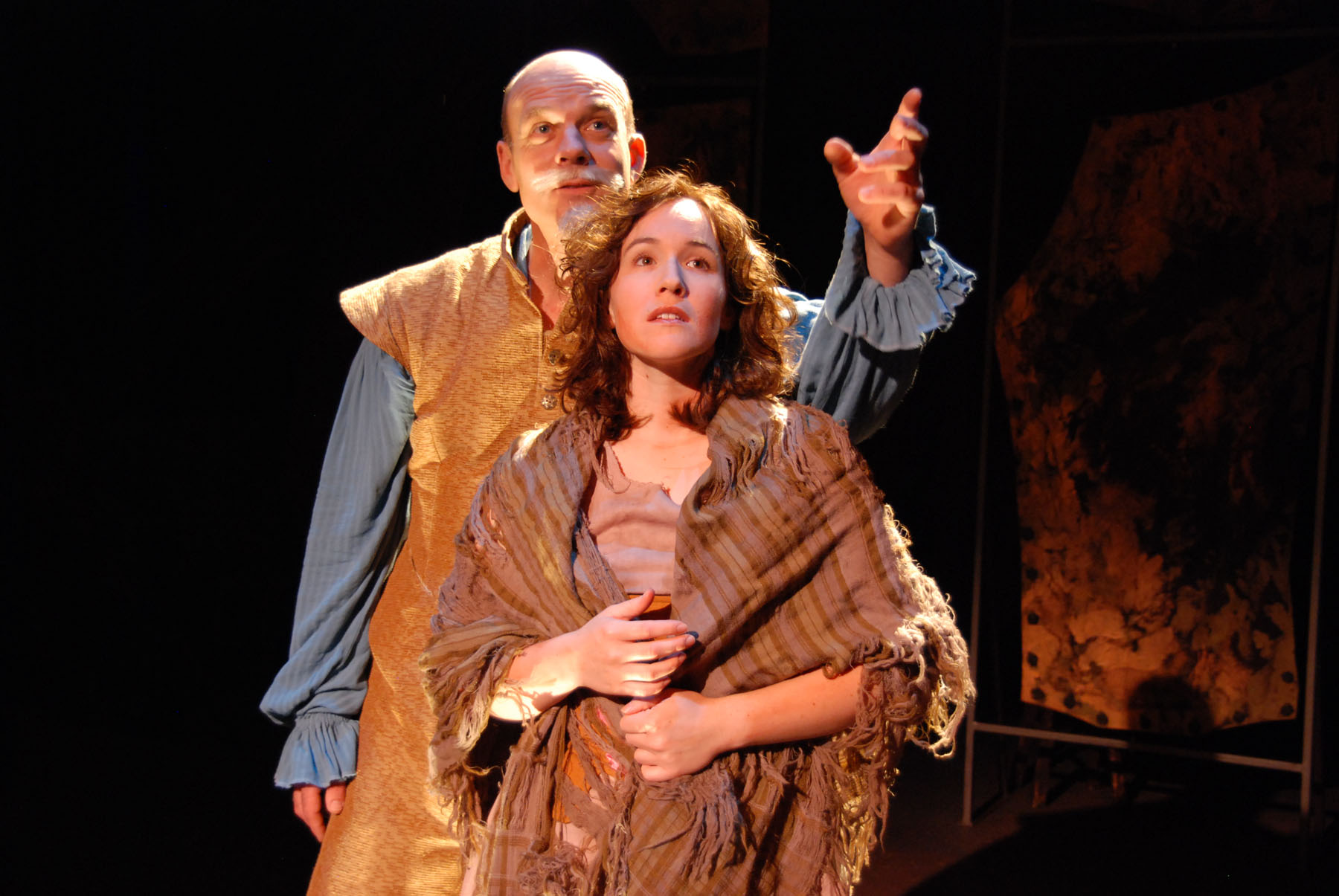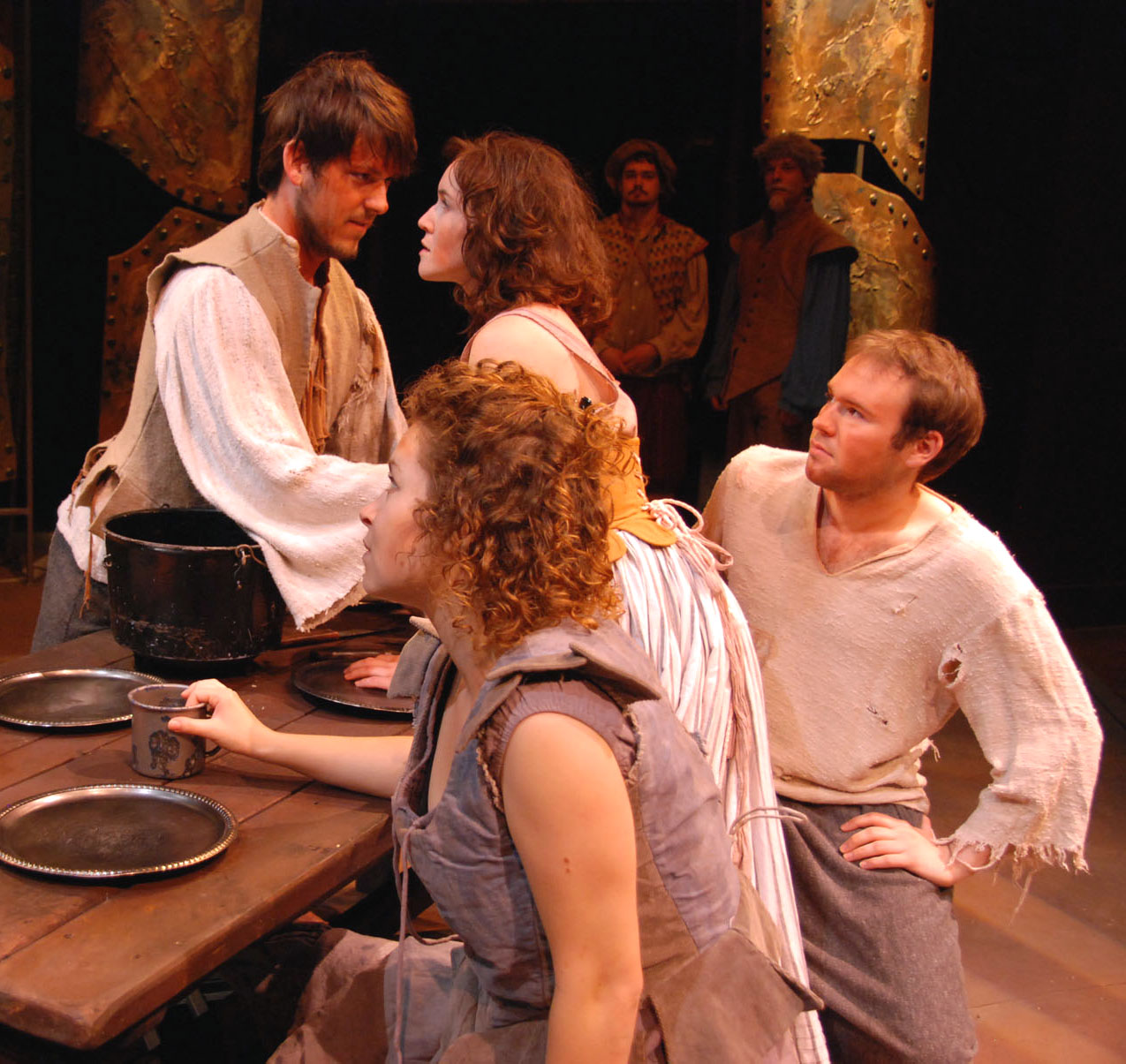THEATER: Chasing Windmills in Lanesboro
Theater critic Christy DeSmith weighs in on Commonweal Theatre's production of "Man of La Mancha" and on what happens when that critical cha-cha-cha, the pizzazz of a beloved classic show, goes missing.



I DONT KNOW ABOUT YOU, BUT WHEN I FIND MYSELF DESTINED for yet another production of Man of La Mancha, it isnt the perennially revisited pop song, The Impossible Dream, that I look forwarding to hearingits the tearjerker Dulcinea. For me, the comparative subtleties of this lesser known lyrical gem perfectly capture the transformative powers of Quixotes optimistic thinking: the kitchen whore, Aldonza, becomes a woman worthy of admiration, respect, and love, thereby deserving of the virtuous title, Dulcinea. And because Don Quixote saw her as such, she, too, comes to believe it.
But, sadly, I nearly missed the catharsis of crying to this favorite song; as it turned out, the new production of Man of La Mancha I’d gone to see, by the Commonweal Theatre Company (located in the impossibly dream-like hamlet of Lanesboro, Minnesota), was considerably lacking in emotional thrust.
Of course, the complex, play-within-a-play structure of the musical makes this a tough one to stage: the Cervantes character is imprisoned, along with his manservant, for crimes against the church. After being attacked by their fellow inmates, whove decided to cook up a mock trail in order to steal what appears to be a valuable manuscript, the writer presents his defense: playacting the story of Don Quixote, with inmates cast in supporting roles.
The prison is presumably a dark place, but one hopes a vivid fantasy-world will spring to life once Cervantes starts spinning his yarn. In Commonweal Theatre’s new rendition, however, no such relief is in the offing; instead, with Jason Underferths dark, shadowy lighting design, what you see on stage looks as though it belongs to a ghost story. _________________________________________________
It wasn’t so much that the singers couldnt hit their money notes;
rather, it sounded as though they feared them.
_________________________________________________
If one could have properly seen it, the set was actually something to behold: adorned with brassy bits of actual windmills Quixotes ferocious giantsdonated by Eco Energy, a company with the honorable mission of bringing wind power to southeastern Minnesota. But, unfortunately, a viewer cant get an eyeful of these impressive trappings until the end of the play, when the house lights come up and the actors take their final bows.
Whats more, Hal Cropps stage directions are beyond minimalist; they’re staticlazy, even. Here, too, the interpretation is somewhat understandable, what with the claustrophobic confines of the imaginary prison vault. And, sure, Quixote is an inflexible, middle-aged fellow no longer blessed with youthful limberness. Even so, in the midst of all the joyful singing that runs through the play, I couldnt help but wonder: why the preponderance of cross-legged actors on stage, looking bored almost to death?
Among the show’s manifold flaws, however, the worst offender was certainly the universally lackluster singing. It wasn’t so much that the singers couldnt hit their money notes; rather, it sounded as though they feared them. Whenever a song ascended the climactic heights of a crescendo, or even a modest scaleas it does during Sanchos introductory ditty I Really Like Him (played and sung by Troy Iverson)the singers voices invariably puttered out. When faced with a high note, in precisely the spots where gusto was called for, the singers backed off, letting their voices stall. Such timidity was disappointing, to say the very least; what’s more, this consistently anticlimactic fizzle at the high points for these familiar songs also interfered with the productions overall emotional impact.
Nevertheless, there were a few bright spots: some in this cast seem to have taken heed of the iconic musicals can-do message; and, luckily, they did so just in time to snag this picky theatergoers heart for the first rendition of The Impossible Dream. For starters, leading man Eric Bunge who plays both Cervantes and a shaggy, gray-haired Don Quixoteis quite likable. I enjoyed his wide-eyed, winsome brand of chivalry and the resonant, declarative way he bellowed I, Don Quixote. At one point an acoustic guitar-wielding Bunge led the cast in an appealingly throaty, intimate version of the song Little Bird, Little Bird; and, in this production, every attempt to inject the score with folk sensibilities is a good one. Tambourines, maracas, percussive pots and pans, and even the clichéd castanets have worldly, street-smart textures that dont necessarily match the spirit of the classic Quixote. (Hed likely prefer a piano quintet.) But these rustic instruments lent a few numbers during the shows second half the likeness of campfire songs, which was, frankly, better suited to this cast of small voices. _________________________________________________
Nevertheless, some in this cast seem to have taken heed of the iconic musicals can-do message; and, luckily, they did so just in time to snag this picky theatergoers heart for the first rendition of The Impossible Dream.
_________________________________________________
Actress Stef Dickens (as Aldonza, the “kitchen whore”) was, by far, the most physically commanding among the cast. Aptly dressed in a tattered skirt and ill-fitting corset (by costume designer Angela Finnes) that made her chest appear almost concave, Dickens’ performance benefitted from her crisp, yet expressive voicethough, as with the rest of the cast, she didnt hit her high notes with any particular grace. Still, she appeared the most natural in the skin of her character. Whereas most of the other actors’ characters came off as stiff as Quixotes sword, Dickens’ Aldonza really moved: she violently shoved at the muleteers who repeatedly grope her; she slithered, very sexy-like, up to Mr. Quixote, who, nonetheless, managed to maintain the requisite propriety.
There were a few other fine touches: the heartbreaking bruises that covered Aldonzas body, the lovely accordion rounding out a few of the songs. But in the end, it was Bunge and Dickenss spirited performanceswhich shifted so seamlessly between reality and fantasy, sanity and madnessthat blessed this production with its modest charms. Schmaltzy as it now seems, in spite of the show’s flaws, I even got the usual goose bumps (and, yes, wiped a few tears) during the reprise of Dulcinea.
About the writer: Christy DeSmith is a former editor at The Rake. She is also a freelance theater critic and was recently named an affiliated writer for 2007-08 by the Theatre Communications Group and American Theatre magazine.
What: Man of La Mancha by Dale Wasserman, directed by Hal Cropp
Where: Commonweal Theatre Company, Lanesboro, Minnesota
When: The play runs through October 25, 2008
Tickets: $25